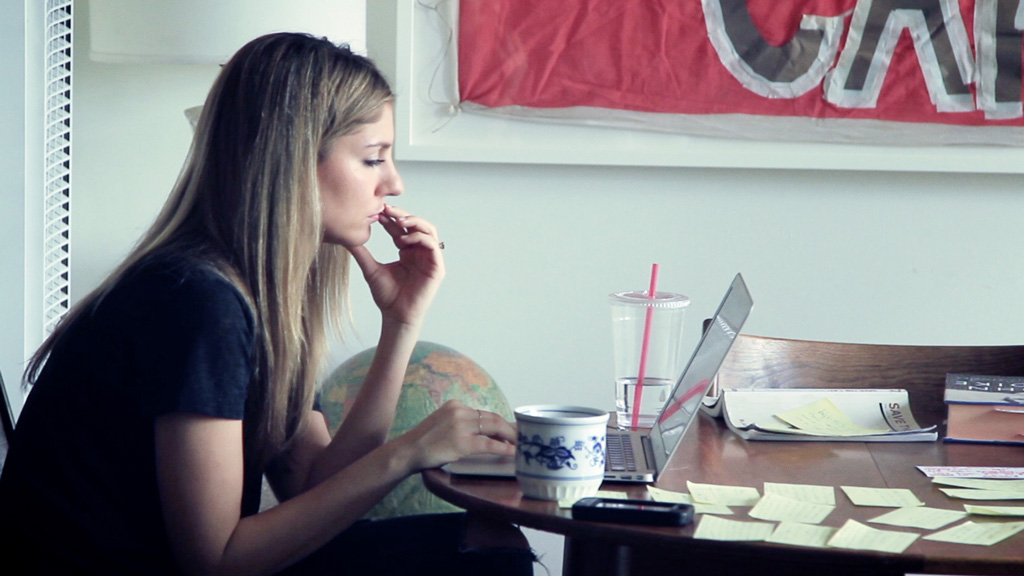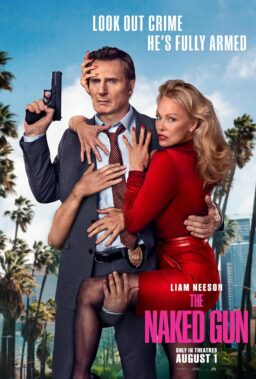“I’m right up against
the wall of what I think I might be capable of.”
It takes a lot more time, effort and manpower to make a film
than most people even imagine. And I’m naturally drawn to quality television
that helps the average person understand what goes into the product they’re
watching in theaters. Some of my favorite documentaries are about the
filmmaking process. And so I was intrigued when I heard about Starz’s new Original
Filmmaking Experiment, “The Chair,” debuting Saturday at 9pm EST. While the
actual show itself suffers a bit from over-producing and over-editing, the
lessons to be learned about what it takes to be a director and how a film gets
made in today’s market are invaluable for film fans. “The Chair” is more than a
competition, it’s an invaluable tool for critics and viewers looking for a
deeper understanding of the state of the director’s position in 2014.

The concept is brilliant. Take a script, give it to two young
directors making their feature debut, film what happens. Chris Moore, the man
behind “Project Greenlight,” produces along with Zachary Quinto and his team of
partners at his production company. There are very few rules:
1.
R Rated or Less
2.
85 minutes or Longer
3.
Stick to the Plot of the Screenplay
4.
Keep Character Names
5.
Don’t Fuck Up with the Money
Those are the rules as outlined on the show but there are a
few others. They have to prep and shoot in Pittsburgh. They have to work with
the original screenwriter, although, as you’ll see, the two directors have very
different ways of doing that and great desires to rewrite. And, believe it or
not, they get final cut. Unless it’s financial, Moore will hardly ever step in.
The best film at the end of the process, earns the director $250,000.
Moore and the team behind “The Chair” chose wisely when they
picked their two young directors. Shane Dawson is a West Coast YouTube Star
with a solid fan base and a remarkable degree of confidence; Anna Martemucci is
an East Coast independent filmmaker who has come up the old-fashioned way
working as a writer & producer on shorts and low-budget features. It’s male
vs. female, coast vs. coast, new media vs. old. Can someone from the new media
generation of 4-minute clips make a full feature? Can someone who has worked as
a team member be a leader? Anna and Shane are SO different, down to their very
core, but they both have the same job with the same script. The results are
going to be fascinatingly distinct.

Both Shane and Anna have clear wells of talent from which to
draw. There’s an interesting bit of commentary on gender approaches to
directing here as well. Of course, I’m not painting with a broad enough brush
to argue that either represents their entire gender, but it’s hard not to
notice that Shane is over-confident to a fault and Anna is under-confident to a
fault, which begs one to ask if the male-driven world of directing has
influenced both of those facts. Shane wants to take control of everything,
including rewriting the script to a degree that he thinks he deserves credit on
it, and even disagreeing with his producers. Anna is more empathetic,
team-oriented and openly willing to cry on camera. Her production takes a blow
in the second episode that would devastate me if I were in her shoes. Seeing
how these two respond to setbacks is the key to the success of “The Chair.”
Being a good director, or good at anything really, comes down to how one
responds to mistakes and failures more than how one plans for success.
The interesting behind-the-scenes details of “The Chair” overwhelm
the few mistakes made in the production of the show itself. The interview
segments with people like Moore and Quinto are hyperactively edited, including
coverage (the same interview from multiple angles). These are fascinating,
smart guys who really know the business but the flashy production of the show
distracts from the points they’re trying to make.
It’s a minor complaint for a really good show. There are so
many remarkably interesting scenes in the first two episodes alone from the way
both directors deal with giving notes to the screenwriter to location scouting
to the way they build their teams and delegate authority. You even get to see
how a director tests fake vomit. All in a day’s work that’s much harder than you first thought before you watched “The Chair.”












